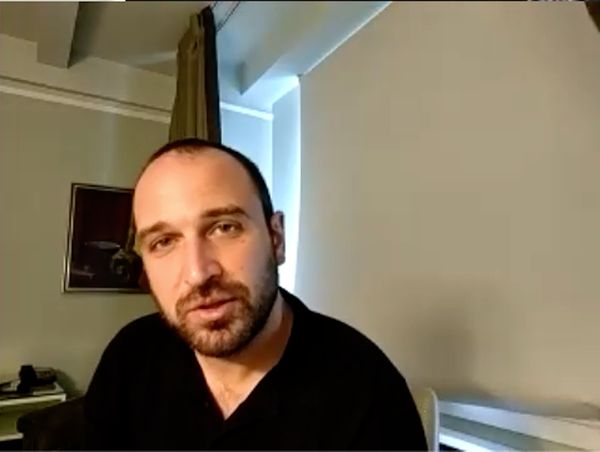 |
| What Do We See When We Look At The Sky? director/screenwriter Alexandre Koberidze: “Before the script I mostly write it like a novel or a story.” |
In the second half with Alexandre Koberidze on What Do We See When We Look At The Sky? he talks about working with his brother, composer Giorgi Koberidze, the enchantment of the harp, silent movies and Vakhtang Fanchulidze, the screenplay, taking the past into the future, and framing the film and the actors Ani Karseladze, Giorgi Bochorishvili, Oliko Barbakadze, and Giorgi Ambroladze with cinematographer Faraz Fesharaki.
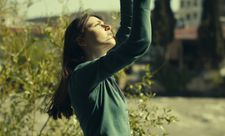 |
| Lisa (Ani Karseladze) in What Do We See When We Look At The Sky? |
From New York City during the New York Film Festival, Alexandre Koberidze joined me on Zoom for an in-depth conversation on What Do We See When We Look at the Sky?
Anne-Katrin Titze: Let’s talk about the music and especially the use of the harp. I don’t remember the last time I saw a film with so much harp. The enchantment - is it that the music does what cannot be expressed by the actors?
Alexandre Koberidze: Yes. It’s more a question to my brother [Giorgi Koberidze] who wrote the music, but we were working quite near to each other. The harp when I hear it it was clear to me. I don’t have the language where I can speak professionally about music, so for me the harp gives the feeling of the past. I think, of course if the current day is so problematic, so we do have a huge problematic past, but when I look back I see more hope than in today. Also in the future I see quite a lot of hope. So these days are very hard but in the past there were interesting and hopeful things. So it’s a way to communicate with our past.
AKT: The past enters also in the form of silent movies. You have several silent film scenes, on the bridge, especially with the wonderful Vakhtang Fanchulidze, who plays the café owner. Then there is what seems like an even farther past on the meadow by the old farm where the cakes are made. How did you work with the actors on those moments? Did they know that their words wouldn’t be heard?
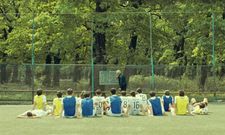 |
| Alexandre Koberidze on storyboarding: “We place things, main characters, or non-main characters and concentrate on them equally.” |
AK: There was a moment while we were preparing the film and we went to one of the music schools, which is also in the film. There was a concert, there were kids playing music that you know from silent films. Also my previous film [Let the Summer Never Come Again] is kind of a silent film. At this moment I also understood that this one should be a silent film. In this one sometimes you have dialogue, people speak, but generally, formally for me it’s still a silent film. Maybe a modern one, but it was for me the main idea to make a silent film.
This idea was then following me through the whole process and these two or three moments that you are mentioning were there in the way they communicate in silent films we know from tradition and films past. In both these moments we have this actor [Vakhtang Fanchulidze], who is a famous actor in Georgia, and who was able to recreate this kind of acting. I told him, let’s act as they were acting in the beginning of last century, and for him it was somehow easy to do these things.
AKT: It’s miraculous how you manage to combine the different elements. There is a Max and Moritz scene where these two guys are playing a trick on people with money on a string, which is pure slapstick standing on its own. The music school is structured like a cumulative tale where we go from one person to the next and to the next. How did you structure all these elements in your script to make it feel as a whole?
AK: Before the script I mostly write it like a novel or a story. Then it becomes a script because at some point you had to apply for funding and you have to bring it in script form. I know some parts you have to have to follow the story of those to people or from the beginning to the end stuff has to happen, but then I always leave some gaps.
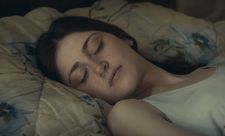 |
| Alexandre Koberidze: “I think one of the ways to express how you feel about someone or something in filmmaking is how you frame them.” |
Free places for things I am gathering from different sources. This for example I saw on YouTube, how some guys were doing this on the street, I forgot which city. They are doing it in real and it’s really funny. It’s a hidden camera thing but they are doing it in a funny way. Sometimes it’s a YouTube video which then becomes part of the film and we recreate it, for example.
AKT: I love the casual details. Early on you have a moment with a sparrow, two sparrows. And then we see the place where the sparrow was, waiting for it to return. Do you know what I’m talking about?
AK: No.
AKT: It happens early on at the school. But my point is that you have these three elements: the humans, the animals, and inanimate objects that are all on equal footing. I just spoke to the Zürcher twins, Ramon and Silvan, about their film The Girl And The Spider and they do something similar. I know you had a public talk with Silvan at the New York Film Festival. Did this subject of same attention come up?
AK: Yeah, a little bit we were talking about it. For me, I also discovered it after I watched the material. Also while making storyboards. At some point it became clear for me and also for the cinematographer [Faraz Fesharaki] of the film that when we make a storyboard, we place things, main characters, or non-main characters and concentrate on them equally. What we wanted to say is that the things or different people whether they have a main or not-main part, in this film they are in the same way precious.
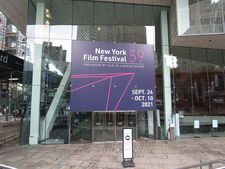 |
| What Do We See When We Look At The Sky? Is a highlight of the 59th New York Film Festival Photo: Anne-Katrin Titze |
Or generally, maybe someone has more time and someone less time in this film, but how we film them and how we try to feel about them … I think one of the ways to express how you feel about someone or something in filmmaking is how you frame them. There we tried to make the storyboard in a way that we treat everybody equally. It can be somehow cheap also, I don’t know.
AKT: The equality of framing is thought provoking and works really well in your film.
Read what Alexandre Koberidze had to say on folktales and fairy tales, magical things, filming the children, and the stories of the dogs in What Do We See When We Look At The Sky?
What Do We See When We Look At The Sky is out in the UK now





















